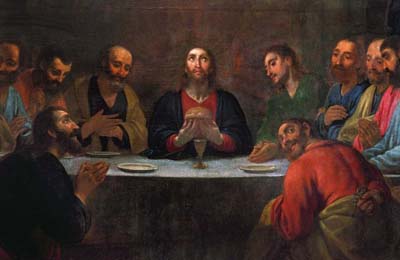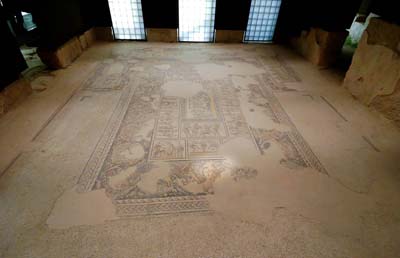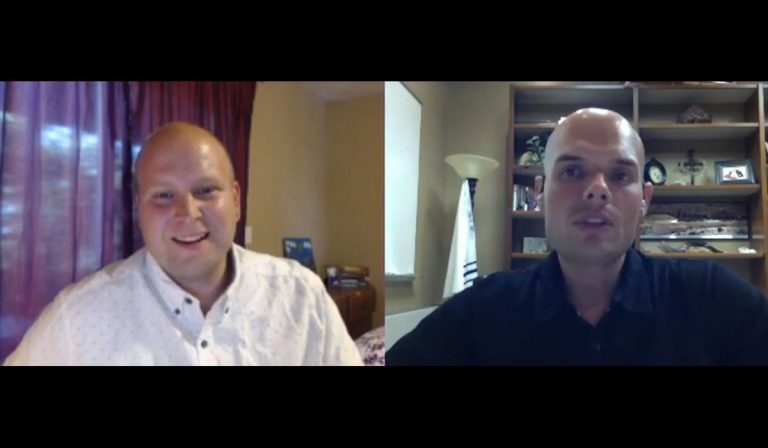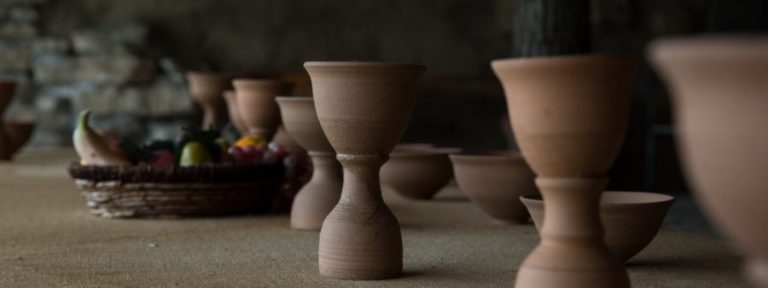Judas: Villain or Guest of Honor?
For most of us, Judas Iscariot is the great villain of the passion narrative, but for Jesus, Judas was the guest of honor. We know this because of one seemingly innocuous detail that every gospel writer chose to include when discussing the last days of Jesus. At the Last supper, Jesus and the twelve disciples did not sit while eating, they reclined.
While others debate whether or not the last supper represents a Passover meal this Easter, I would like to discuss the one component of the last supper of Jesus about which we are fairly confident. It is a cultural insight that has huge ramifications for how we understand Jesus’ relationship to Judas and to ourselves.
Dining in a U-shaped lounge
Our images of the last supper have largely been shaped by renaissance masters who portrayed Jesus sitting at the center of a long table with six disciples on either side, but Raphael and DaVinci got it wrong. Indeed, all four records of the meal mention the reclined posture of the diners (Matthew 26:20, Mark 14:18, Luke 22:14, John 13:23).

This reclined posture seems to indicate that the last supper of Jesus was eaten in the fashion of a Greco-Roman triclinium. By the time of the first century A.D, textual and archaeological remains indicate that a number of Jews had adopted this Hellenized style of feasting, particularly for special meals.
The triclinium meal had eight distinct elements which affect how we understand the social dynamics of the last supper.
- Rather than one long table, diners at a triclinium meal were arranged in a u-shape
- Diners reclined on either pillows or low couches with their heads towards the center of the table settings and their feet towards the outside of the room.
- Communal settings were usually placed for a person and his immediate neighbors
- Diners lay on their left hip and elbow, freeing their right hand to consume food from the settings on the floor or on slightly raised tables.
- This posture meant that one diner could lean back to place his head on the chest of the person to his left or, if someone was to your right, lean forward into your neighbors back.
- The Host of a triclinium meal reclined second furthest to the left
- The host’s “best man” reclined immediately to the right of the Host, allowing him to lean back on the host’s chest
- The Guest of Honor reclined immediately to the left of the Host allowing the host to lean back onto the Guest of Honor’s chest.
What does all of this mean for the last supper?
First it gives us a good idea of the seating arrangement for at least four people during the meal.
- As the host, Jesus would have reclined at the second position on the left end of the U-shaped table.
- At one point during the meal, John tells us that he leaned back into Jesus’ chest to ask him a question. This would place John in the “best man” position immediately to the right of Jesus.
- John leans back, at the motioning of Peter, which means that Peter had to be reclining on the opposite side of the U-shaped configuration for John to see him. That puts Peter in the farthest right position (The position furthest from the host and normally reserved for servants)
- Mark, Luke and John tell us that Judas shared a place setting with Jesus (“dipped his hand” in the “same dish”) Since, the spot immediately to the right of Jesus was taken up by John , that only left the spot Immediately to Jesus’ left, the spot reserved for the Guest of Honor.
Judas was Jesus’ guest of honor at the last supper.

Judas and Jesus
Judas has gotten a bad rap over the centuries. He’s the betrayer, the super-villain of all super-villains. It’s easier for us if we make Judas out to be an enigma of extreme evil. We don’t have to compare ourselves to Judas if he is over-the-top, we’ve never felt that-way-before, evil. But Judas’ betrayal of Jesus may have been far more banal than we would like to imagine.
Jesus was supposed to have been the Messiah, the one person that could initiate a new exodus and once and for all time sweep the Jews out from under the yoke of Roman oppression. Jesus was supposed to be the second son of David, the one that would establish an everlasting political and territorial kingdom for Israel.
It may have been that, for Judas, this non-violent servant-king that Jesus had become was anti-climactic to say the least. In the words of Paul Wright “it is likely that he [Judas] was simply disillusioned, feeling that it was not he but Jesus, so full of promise, who had betrayed the cause” (Greatness, Grace and Glory).
During the last supper, Jesus knew that Judas had, hours before, arranged to betray him. Jesus knew that, hours later, Judas’ kiss would set in motion the terrible pain and suffering of a trial and crucifixion.
And yet, Jesus gave Judas the position of greatest honor at the table. It’s as if Jesus was making one last effort to bring Judas closer to himself. Indeed, Judas reclined where Jesus could lean back against Judas’ chest and weigh the beats of his heart.
The disillusioned guest of honor
Paul Wright’s words have been so hard for me to read at times. If disillusionment is all we have to feel to be in the company of Judas, how close are we to betrayal?
How many of us have been disillusioned with the church or disillusioned with who we thought the church should be or disillusioned with who we thought some leader in the church should have been?
How many of us have become disillusioned with God when we get cancer,
or our spouse dies,
or we lose our Job, lose our house, get squeezed out of the market, passed up for promotion,
or when one of our children finds themselves stuck in a wheelchair?
How many of us know someone who is disillusioned about God? Someone who is feeling angry and betrayed by a distant creator? How many of us know someone who was left with a bad taste in their mouth by “that Christian” down the block that didn’t seem so Christ-like.
How many people do you know that would say “I want nothing to do with Jesus!”
When we are disillusioned, how far away from Judas are we?
When we are disillusioned, How far away from Jesus are we?
When Judas was disillusioned he was right there, next to Jesus and so are we –the guest of Honor. Jesus is leaning back against our hearts waiting for us to lean into him.
Whether you sit, stand or recline, at the communion table this Easter remember you are Jesus’ guest of honor. No matter how betrayed or disillusioned either of you feel, he is always right next to you, willing to share a common place setting at the triclinium table.





